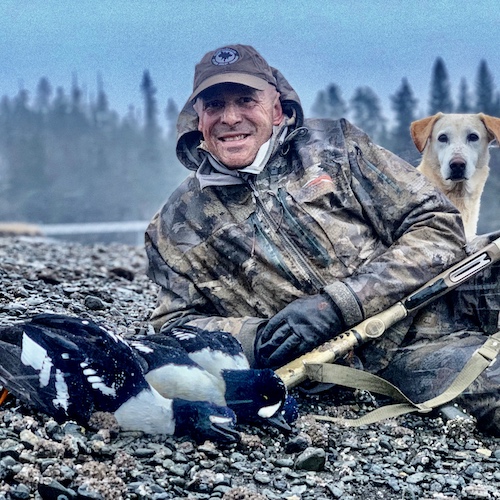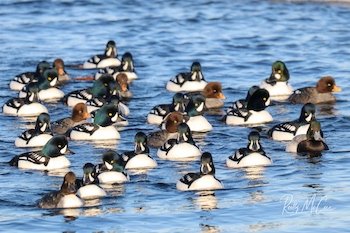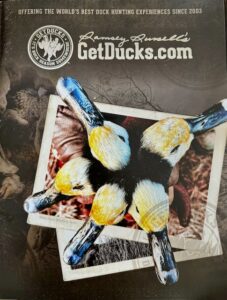Barrow's Goldeneye

Barrow’s Goldeneye (Bucephala islandica) drakes display a white teardrop behind the bill and in front of the eyes of their black head that iridesce blues and purples in the right light. Its head seems notably more bulbous than Common Goldeneye. The male’s chest and sides are bright white, and the white scapulars make a row of spots against primarily black wings. Both sexes have short, slightly upturned bills. The drake has a black bill while the hen has a gray bill during the non-breeding season and a completely yellow bill during the breeding season. Female Common Goldeneyes will only have the tip of their bill yellow during breeding season. Both sexes also have yellow irises, and closely match their yellow legs and feet as well. Females show a dark chocolate head while the rest of the body is grayish with a white underbelly.
Similarly to Commons, the Barrow’s Goldeneye’s preferred food during year-round is any aquatic invertebrates within reach, and some out of reach as well. The Barrow’s Goldeneye is known for dislodging rocks underwater while searching forfood.
Barrow’s Goldeneye are residents in Washington, Idaho, Montana, Oregon, California, and along the Pacific Coast to Alaska. Some are even residents on the Atlantic Coast of Canada. Breeding zone ranges from Alaska and southwards along the Pacific Coast of Canada. The Barrow’s Goldeneye will nest in tree cavities as well as nest boxes no farther than a couple miles away from shallow freshwaters. Barrow’s Goldeneyes will “egg dump” in the nests of others of their species. When eggs hatch, several broods will typically be taken care of by one hen. Vegetation makes up less than a fifth of this species’ summer diet and is dominated by wild celery, rushes, and sedges.
 While wintering, this species may be found near sheltered saltwater areas, especially mussel beds found in bays or harbors. Wintering distribution is strangely disjunct, with abundance limited primarily to the northwest corner of the United States and less abundance Maine through Eastern Canada (and into Iceland). This may be because they do not have strong migratory movements, only going as far as necessary to find open water. Southeast coastal Alaska, coastal Washington and, at times, river systems within Idaho and Montana are excellent places to hunt Barrow’s goldeneye.
While wintering, this species may be found near sheltered saltwater areas, especially mussel beds found in bays or harbors. Wintering distribution is strangely disjunct, with abundance limited primarily to the northwest corner of the United States and less abundance Maine through Eastern Canada (and into Iceland). This may be because they do not have strong migratory movements, only going as far as necessary to find open water. Southeast coastal Alaska, coastal Washington and, at times, river systems within Idaho and Montana are excellent places to hunt Barrow’s goldeneye.

















